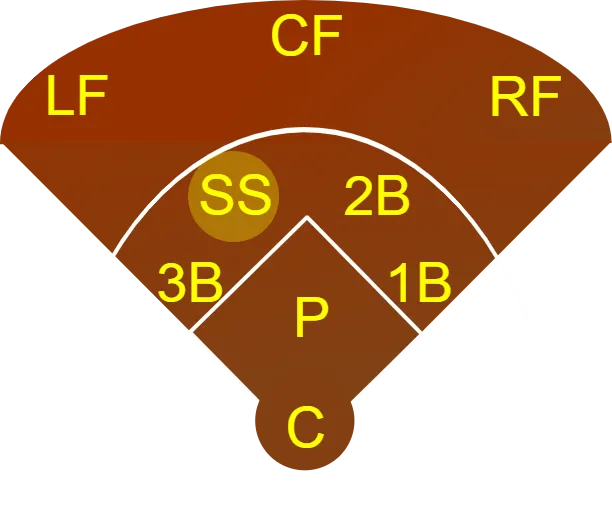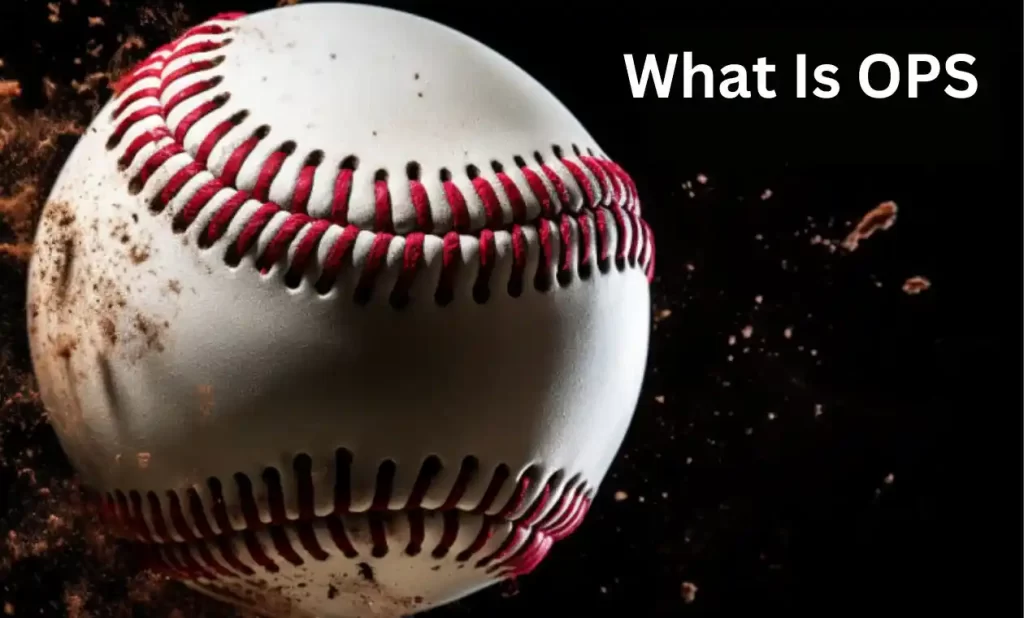
In the world of baseball, “SS” signifies the pivotal position of shortstop, a linchpin between second and third base. Shortstops, often referred to as the field generals of the infield, play a crucial role in shaping the dynamics of the game.
Understanding the significance of shortstops requires delving into their multifaceted responsibilities. Beyond just fielding ground balls and executing flawless throws to secure outs, shortstops embody the essence of defensive strategy, coordination, and anticipation. They serve as the backbone of the infield, orchestrating plays with their agility, quick reflexes, and a keen defensive IQ.
As we embark on this exploration of the “SS” in baseball, we unravel not just the technicalities of the position but also the profound impact shortstops have on the outcome of the game. Let’s dive into the intricacies of their role, skills, and the enduring legacy of those who have donned the shortstop mantle in the history of baseball.
Also Read: Baseball Throwing Tips
Basics of SS in Baseball
Shortstops, stationed strategically between second and third base, shoulder a myriad of responsibilities fundamental to the team’s success. The cornerstone of their duties lies in proficiently fielding ground balls, line drives, and pop flies that find their way to the middle of the infield. Each movement, each swift reaction, contributes to the intricate dance of defensive maneuvers.
A shortstop’s primary objective is not only to secure the ball but also to execute precise throws to first base, ensuring crucial outs for the team. This requires not just a strong throwing arm but also the ability to make split-second decisions, anticipating the best course of action.
The key skills that distinguish exceptional shortstops encompass agility and quick reflexes. These attributes are essential for reacting promptly to sharply hit balls, contributing to the fluidity of defensive plays. A robust defensive IQ is equally vital, enabling shortstops to read the batter’s intentions, anticipate plays, and coordinate seamlessly with other infielders.
As we delve deeper into the basics of the shortstop position, we uncover the intricacies that make this role central to the team’s defensive prowess. The agility, reflexes, and strategic acumen of shortstops form the bedrock of their contributions to the game of baseball.
Advanced Plays
Different Types of Throws Mastered by Shortstops
Shortstops elevate their defensive prowess by mastering various types of throws tailored to diverse in-game scenarios. Among these, the backhand throw involves scooping ground balls positioned behind their body, showcasing the shortstop’s flexibility and agility. The forehand throw, executed while facing the batter, demonstrates their ability to adapt swiftly to different play situations. Additionally, shortstops may employ the one-handed throw, making rapid and precise throws without the need to transfer the glove.
Process of Turning a Double Play
A hallmark of shortstop excellence lies in their proficiency in turning double plays, a defensive maneuver crucial for team success. The process unfolds with the shortstop fielding the ball, typically a well-placed grounder. Swiftly, they step on second base to force out the runner in that position. The final act involves a powerful and accurate throw to first base, completing the double play. This sequence demands not only technical skill but also seamless coordination with teammates.
Defensive Shifts and Their Impact on Shortstops
In response to the batter’s tendencies and strengths, shortstops often engage in defensive shifts, strategically repositioning themselves within the infield. Whether moving towards first or second base, these shifts aim to anticipate hits and optimize defensive coverage. This tactical adaptation highlights the versatility of shortstops, showcasing their ability to adjust dynamically to the ever-evolving dynamics of the game.
As we unravel the intricacies of these advanced plays, we gain insight into the skillful and strategic aspects that define the role of shortstops in baseball. Their ability to execute diverse throws, orchestrate double plays, and adapt to defensive shifts adds a layer of complexity to their contributions on the field.
Also Read: How to Grip a Baseball
Statistics and Metrics
Evaluating the performance of shortstops involves delving into key statistics that reflect their defensive prowess. One such metric is the fielding percentage, a measure of the rate at which shortstops handle balls correctly. Additionally, the range factor provides insights into the number of outs made per game due to fielding, showcasing the shortstop’s ability to cover ground effectively. Keeping an eye on errors is crucial, as these misplays can result in advancing runners or scoring opportunities for the opposing team.
Going beyond traditional statistics, advanced metrics offer a more nuanced understanding of a shortstop’s defensive impact. The Ultimate Zone Rating (UZR) provides a comparative measure of defensive runs saved, highlighting a shortstop’s performance relative to an average player. Defensive Runs Saved (DRS) estimates the number of runs a shortstop saves through their fielding efforts, offering a quantitative assessment of their contributions. Batting Average on Balls in Play (BABIP) delves into the luck factor, indicating a shortstop’s success in handling ground balls and line drives.
In the realm of baseball, shortstops stand out as integral defensive players, and comparing their statistics with players in other positions provides valuable context. While shortstops may have lower fielding percentages compared to first basemen, their higher range factors underscore their ability to cover more ground. This comparison illuminates the unique contributions of shortstops within the broader defensive landscape of the game.
As we navigate through these statistics and metrics, we gain a comprehensive view of how shortstops are evaluated in the realm of baseball. The blend of traditional and advanced metrics paints a vivid picture of their defensive capabilities, offering fans and analysts alike a deeper appreciation for the nuances of the shortstop position.
Fun Facts and Trivia
“Around the Horn” Double Play Combination
The term “Around the Horn” refers to the seamless execution of a double play from the shortstop to the second baseman and then to the first baseman. This intricate play showcases the agility and precision required for a flawless defensive sequence. Shortstops, as the initiators of this combination, play a central role in its success, emphasizing their pivotal position in the defensive strategies of a baseball team.
Origin of the Term “Shortstop”
Delving into baseball’s rich history reveals the intriguing origin of the term “shortstop.” Coined in the late 19th century, the term emerged as a reflection of the shortened distance between bases. Shortstops, positioned strategically in the middle of this condensed distance, became synonymous with defensive excellence. Unraveling the roots of this term adds a layer of historical significance to the role shortstops play on the modern baseball field.
Memorable Plays by Famous Shortstops
Baseball history is adorned with memorable plays crafted by legendary shortstops. Derek Jeter’s “Flip Play” during the 2001 World Series and Ozzie Smith’s acrobatic backflip catch are etched in the annals of the sport. These iconic moments not only highlight the athleticism and skill of shortstops but also contribute to the enduring legacy of these players. The indelible impact of such plays resonates with fans, forever shaping the narrative of baseball history.
As we uncover these fun facts and trivia, we gain a deeper appreciation for the cultural and historical dimensions woven into the fabric of baseball. Shortstops, beyond their on-field contributions, become part of the sport’s lore, their plays and the origins of their title adding a layer of fascination to the game.
Also Read: Is Catching Bad for Knees?
Beyond the Basics
The role of shortstops in baseball has undergone a fascinating evolution over the years. Once primarily valued for defensive prowess, modern shortstops are now expected to contribute offensively as well. The evolution of this role reflects a shift in the game’s dynamics, emphasizing a more well-rounded skill set. Today’s shortstops often find themselves batting near the top of the lineup, adding a new dimension to their contributions on the field.
A significant aspect shaping the role of shortstops is the ever-evolving landscape of defensive positioning. With the advent of advanced analytics, teams strategically position shortstops based on batter tendencies. These defensive shifts, tailored to the strengths and weaknesses of individual hitters, showcase the adaptability of shortstops in maximizing their defensive impact. Navigating the nuances of defensive positioning has become a crucial aspect of the modern shortstop’s skill set.
Looking ahead, the importance of athleticism and offensive production for shortstops is poised to continue. The trend towards more well-rounded players in the position is likely to persist, with teams valuing shortstops who can make impactful contributions both at the plate and in the field. As the game evolves, shortstops will remain a linchpin in team strategies, their versatility and adaptability ensuring their continued prominence in the world of baseball.
In exploring the evolution, current trends, and future prospects for shortstops, we gain insights into the dynamic nature of their role. From defensive stalwarts to offensive contributors, shortstops stand at the forefront of the changing landscape of baseball, adapting and excelling in an ever-shifting game.
Salary and Popularity
Shortstops’ Impact on Team Salaries
The prowess of shortstops extends beyond the field, significantly impacting team finances. Teams often allocate substantial portions of their budgets to secure top-tier shortstops due to their dual contributions in offense and defense. The defensive stability and offensive firepower that an elite shortstop brings to a team make them a valuable investment, justifying the financial commitments made to secure their services.
Their Popularity Among Fans
Shortstops, with their dynamic playstyle and crucial role in team strategies, garner immense popularity among baseball enthusiasts. Fans often form strong connections with their favorite shortstops, appreciating their pivotal contributions to both the defensive and offensive facets of the game. The charisma and skill displayed by star shortstops contribute to their fan-favorite status, making them iconic figures in the realm of baseball.
As we delve into the financial implications and fan appeal associated with shortstops, we recognize the multifaceted impact these players have on the broader baseball ecosystem. Their significance is not confined to the field but resonates in team finances and the hearts of passionate fans, solidifying their status as indispensable figures in the world of baseball.
In Crux
The journey of a shortstop is laden with challenges that demand resilience and skill. From the pressure of crucial defensive plays to the need for split-second decision-making, shortstops navigate a high-stakes environment. Yet, within these challenges lie the rewards — the satisfaction of making acrobatic plays, the thrill of turning double plays, and the joy of contributing to team victories. Shortstops face adversity head-on, turning challenges into opportunities for growth and success.
In the grand tapestry of baseball, the shortstop position emerges as a linchpin, connecting the intricate threads of defense and offense. The significance of shortstops extends beyond statistics and metrics; it’s woven into the very fabric of the game’s history and evolution. As we celebrate the challenges overcome and the rewards reaped by shortstops, it becomes clear that their role is not merely a position on the field but a legacy within the timeless narrative of baseball.
In conclusion, the shortstop position is a testament to the enduring spirit of the game, where challenges are met with skill, and rewards are earned through dedication. The saga of shortstops continues to unfold, leaving an indelible mark on the diamond and the hearts of baseball enthusiasts worldwide.

Meet Daniel Anderson, the heart and soul behind Baseball Pro Picks. At 49, Daniel’s life has revolved around baseball, a passion that’s as strong today as it was when he first fell in love with the game. Living in the USA, Daniel has dedicated countless hours to watching, analyzing, and understanding every pitch, hit, and home run, making almost no game missed. His deep-rooted love for the sport is matched only by his commitment to sharing insightful, expert analysis with fellow baseball enthusiasts. With decades of experience and a keen eye for the game’s nuances, Daniel brings a unique perspective that enriches Baseball Pro Picks. Trust Daniel to guide you through the intricacies of baseball with the authority and trustworthiness of a true aficionado.












